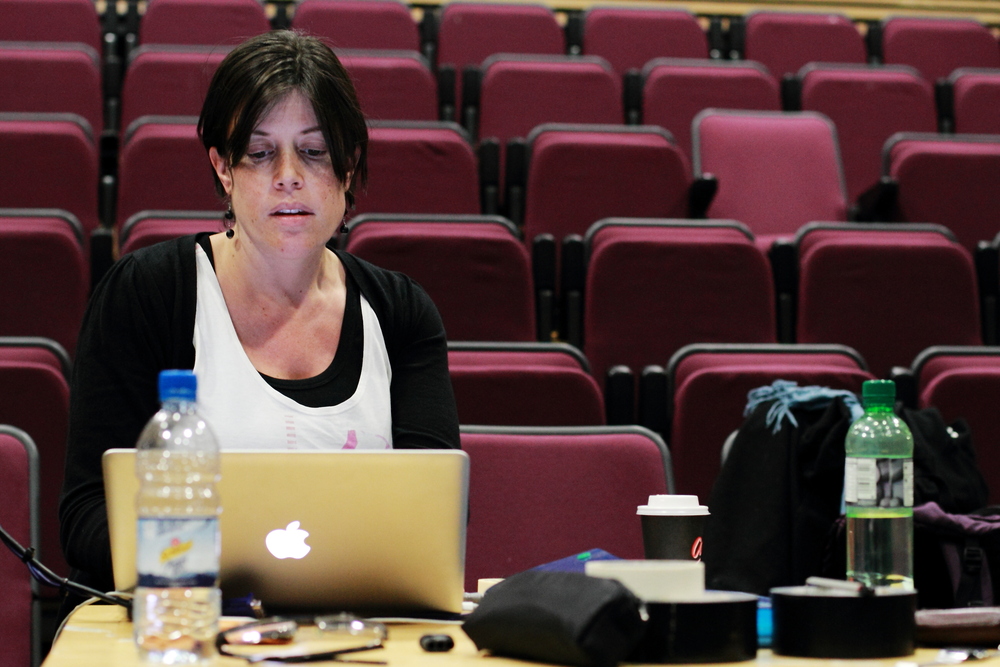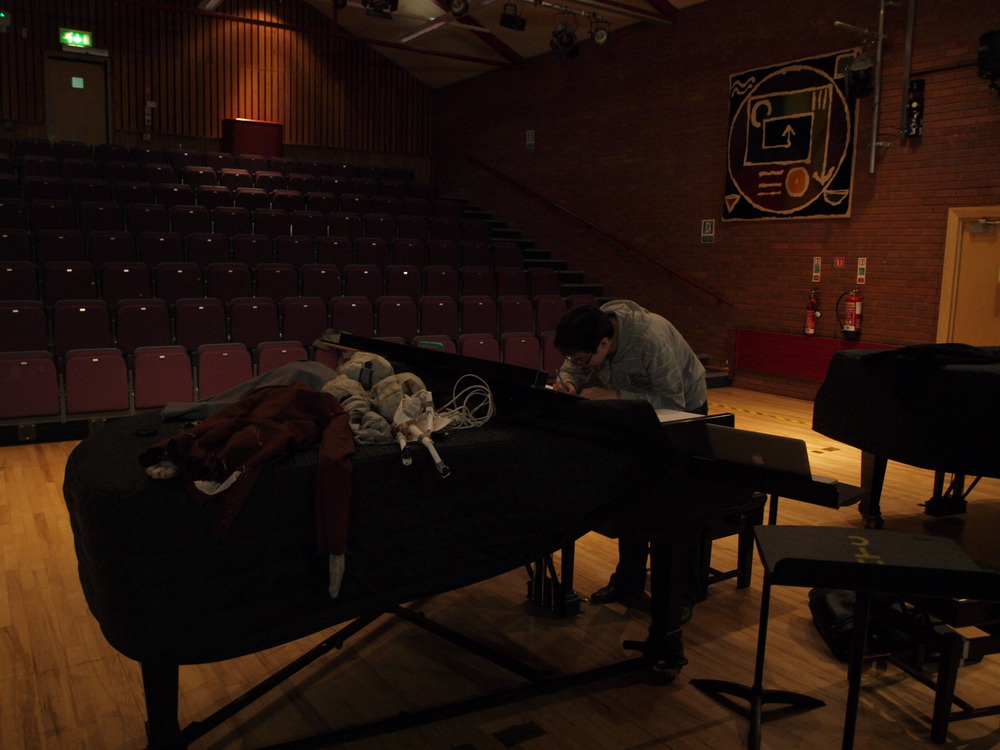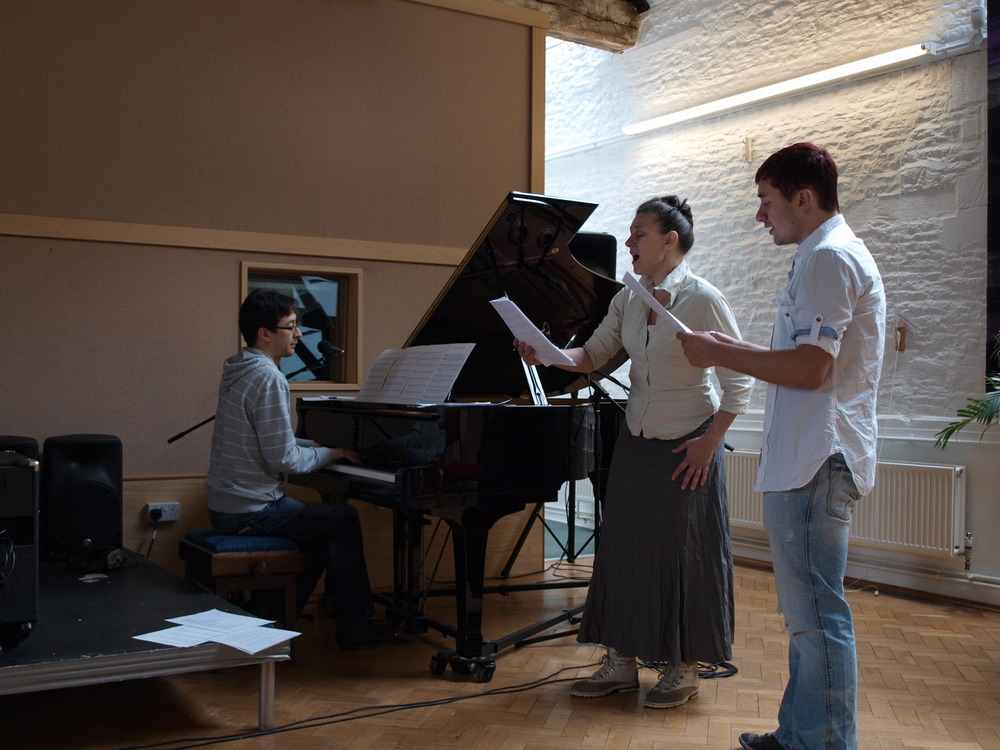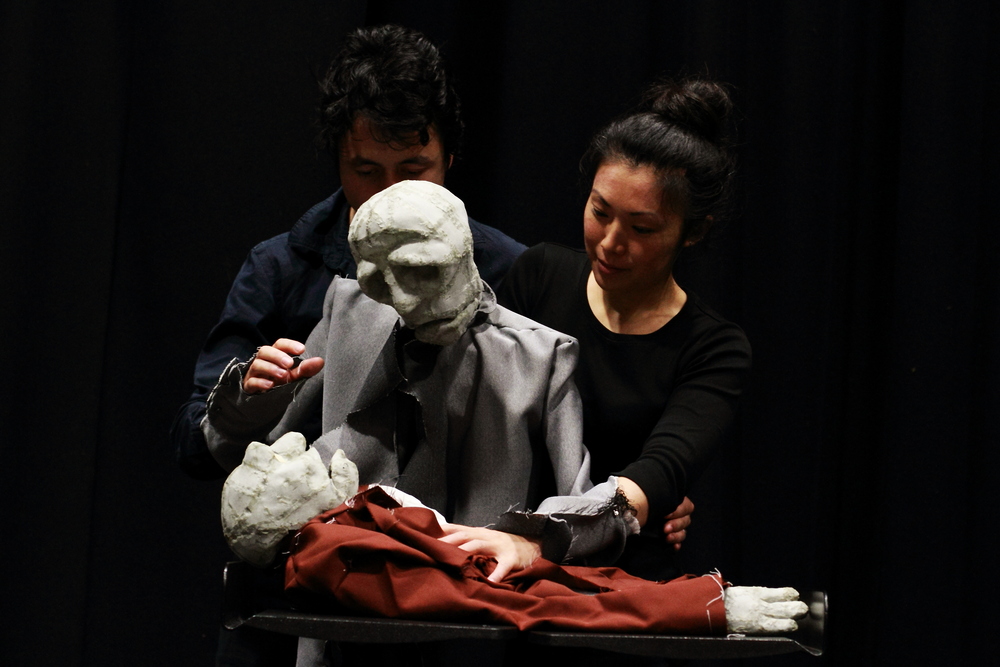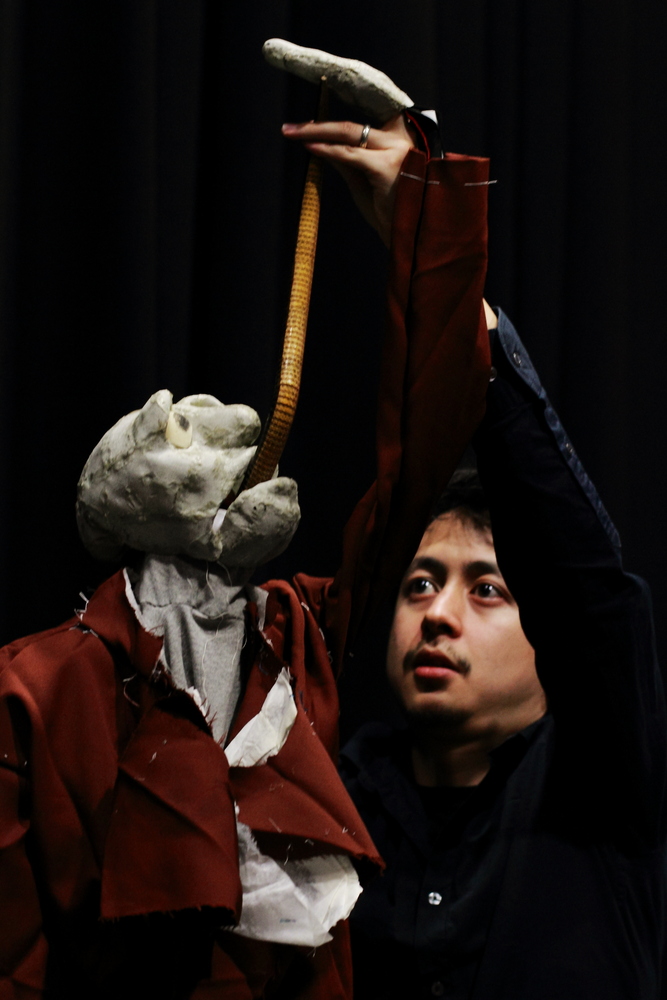Laura and Tobi met with the following project partners:
-
Dr Alan Bates, Honorary Senior Lecturer in Pathology, University College London
-
Dr John Lee, Director of Intercalated BA in Medical Humanities, Bristol University
-
Professor David Turner, Swansea University
‘Incurable Freaks’
David discussed the term ‘incurable’ – Tobi had chosen it for its paradoxical quality; David confirmed that in fact the term ‘incurable’ existed in 18th and 19th-century France, when there was an interest in the fate of the incurables, who by definition fell outside of medical care and were often thrown out of hospitals. In 1710 a boy was thrown out of St Thomas hospital for being incurable, and died on the streets.
Treatments
We asked what treatments might have been carried out on Tarrare in the hospital, in order to write the song ‘Cures’ in which the Doctor describes what he is doing to Tarrare and to gather ideas for staging the scene
-
Suggestions that ended up in the show included:
-
bloodletting by knife or leeches (Tarrare’s arm is cut open by the Doctor’s assistants)
-
enemas (the Doctor’s assistants give Tarrare an enema)
-
purging (Tarrare vomits following his enema as the Doctor sings about purging)
-
force feeding (Tarrare is force-fed eggs by the Doctor’s assistants)
-
Other suggested treatments that didn’t end up in the show:
-
cupping (according to Alan this wasn’t a very painful treatment)
-
psychological
-
dark room
-
locked in cold bath up to neck
-
Insults
We asked for examples of insults that might have been used against someone like Tarrare, particularly as the term ‘monster’ did not have the same negative connotations as it does today. Suggestions were incorporated into the libretto, and included:
-
beast
-
unnatural
-
degenerate (degeneration a big theme)
-
primitive
-
savage
Why was Percy so interested in Tarrare as a case study?
Alan suggested that Percy was probably more interested in studying Tarrare than in actually curing him; the way to get patients is to promise to cure them, but actual motive is to study them – combination of actual curiosity and publicity for him. John pointed out that in the 19th century there was a great deal of work on Hamlet and his patient – the idea of a case history that gains you public attention, giving you status. Alan suggested that Percy uses medicine as an enlightenment project.
Freak show as performance; public autopsy as performance
-
Wattle & Daub have been interested in incorporating the theme performance into the show as much as possible, as this is part of our aesthetic of making the workings of performance visible (puppeteers that can be seen, the makings and working of puppetry are always visible), and because staging a true story is an act of interpretation and therefore inherently a performance. This is helped in this show by the fact that Tarrare was put on display (a performance) in two ways: the freak show, and the public autopsy
-
David pointed out that by dramatising two performances in the 18th century (which had different sensibilities to today), we’re making the audience complicit in these kinds of performances
-
John discussed the fact that in France public dissections were bodies of criminals, so going to watch it has a moral value; part of process of justice by going to see it
-
Alan pointed out that in this country public dissections were purely symbolic (just a little cut in abdomen, then sent off to get actually dissected)
-
David discussed opposition to this practice – even dissecting a criminal for some people goes beyond what’s acceptable
-
-
We discussed how we are positioning the audience (as audience to autopsy – med students & high-ranking military people e.g.), as audience to freak show (general public – seen as lesser, more threatening)
Why did the Doctor never find the golden fork?
-
This was a fact taken from Baron Percy’s autopsy notes – he searched for the golden fork that Tarrare claimed had killed him, but never found it. For Wattle & Daub this becomes a metaphor for a failure of understanding the other – for the Doctor and for everyone who came into contact with Tarrare.
-
At an advisory panel meeting, we discussed the question of the golden fork:
-
Alan: Golden fork is a metaphor for pathological findings he never makes – he describes what he sees but does not understand. Like taking apart a car and just being left with parts of a car. Intangible part of humanity he isn’t going to get at. But there is something valuable – how can everything about a human being be captured within one knowledge system?
-
John: One of many well intentioned beginnings that don’t arrive anywhere – this is one step on a much longer journey.
-
Alan: Percy’s had plenty of time to look at the whole picture but he looks for only one thing.
-
Fork represents unknowable medical/bodily thing; also represents his humanity; John discussed interest in personality at time, what makes a personality)
-
Within medicine monsters were seen as something to be systematised and cured (therefore they disappear). Percy wants to understand everything. Wants to make everything fit. Freaks don’t fit.
-
—
Tarrare doesn’t fit into any of the worlds that try to contain him
David suggested this idea that Tarrare doesn’t fit into any of the worlds that attempt to contain him (the world of the freak show, of the military, and the hospital – the three worlds that Hattie Naylor helped Wattle & Daub identify within the narrative arc of the story). David talked about the uncontrolled side to Tarrare – fear of what might he do next. This is what people don’t like about him. The three worlds of the freak show, military, hospital all attempt to fit him into their respective civilising project, yet none can contain him. David suggested that, for instance, in the freak show there’s a sense that he’s gone too far when he eats/rips apart the cat (the audience are horrified).
This idea became a central motif for Wattle & Daub’s approach to how Tarrare engages with each of the three worlds of the freak show, the military, and the hospital, informing planning with Hattie Naylor and Director Sita Calvert-Ennals.
—
The freak show
David discussed freak shows in the 18th century, describing a sense that the freak show is impolite – it becomes popular/unseemly for the elites to be present; so the space of the freakshow is disreputable. He talked about adverts advertising both the difference of the freak and all the ways on which they are similar to ‘regular’ people – marriage, good manners, politeness. This both normalises and emphasises their difference. John talked about Caliban as a perfect example of the monster/human juxtaposition within this framework.
The Doctor’s mess in the autopsy room
Order/disorder – the Doctor ends up in mess of blood and guts in the autopsy room at the end; everything has unravelled as he’s tried to classify it, to use medicine to make order. This was based on a suggestion from Alan, who liked the Doctor’s mess and confusion at beginning of the autopsy in the work-in-progress – he described his work as a pathologist as really being a bit like that.




